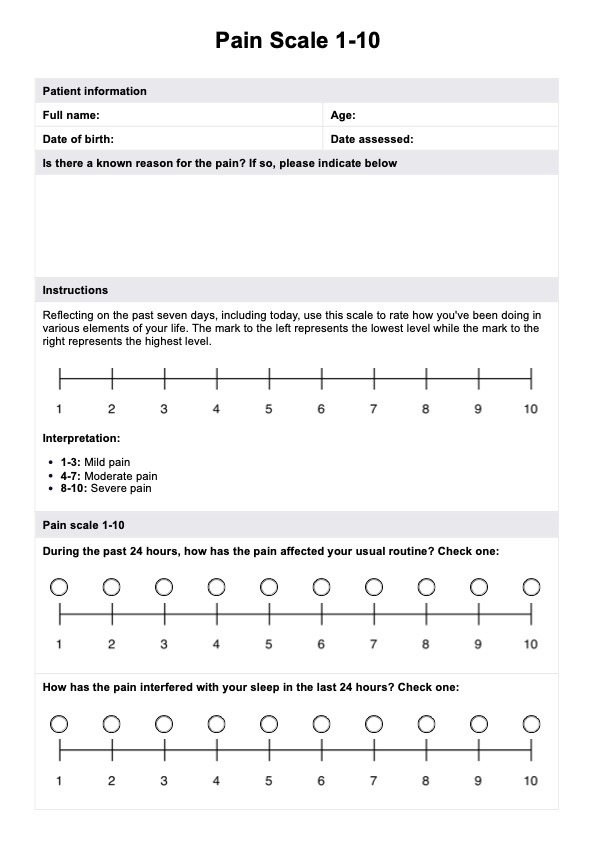A Pain Scale of 1-10 is the most common and widely used pain scale. It’s simple, easy to understand, and objectively measures pain intensity.

Pain Scale 1-10
Pain Scale 1-10 is a standard numerical measure used to quantify pain intensity. Pain can range from mild to moderate and severe. Download our free PDF template and example to learn more.
Pain Scale 1-10 Template
Commonly asked questions
The Pain Scale 1-10 is scored by asking the patient to rate their pain level on a scale of 1-10, with 10 being the most severe pain. The patient can then rate their level of discomfort, and the healthcare professional can use that information to assess the patient’s condition.
The Pain Scale 1-10 is best used when assessing a patient’s pain levels over time. It can be used to monitor their condition, identify underlying issues, and provide appropriate treatments. You can also use it to track post-surgical pain levels or to assess the effectiveness of certain pain medications or treatments.
EHR and practice management software
Get started for free
*No credit card required
Free
$0/usd
Unlimited clients
Telehealth
1GB of storage
Client portal text
Automated billing and online payments











